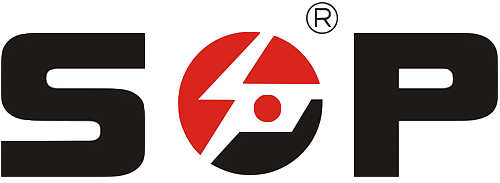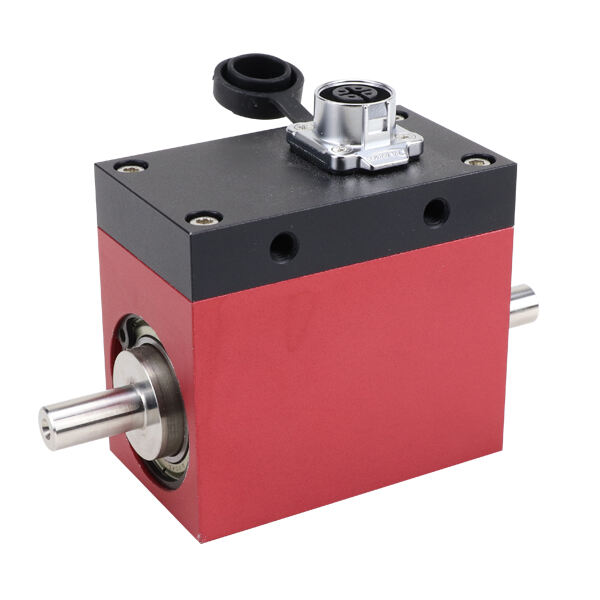Mastering Precision Measurement Through Proper Sensor Calibration
Achieving precise torque measurements is crucial across numerous industrial applications, from automotive manufacturing to aerospace engineering. The foundation of accurate torque measurement lies in proper torque sensor calibration. When calibrated correctly, these sophisticated instruments can provide exceptionally accurate readings that ensure optimal performance, safety, and reliability in mechanical systems. This comprehensive guide will explore the essential steps, best practices, and advanced techniques for calibrating torque sensors to achieve maximum accuracy.

Understanding Torque Sensor Fundamentals
Basic Principles of Torque Measurement
Torque sensors, also known as torque transducers, are precision instruments designed to measure the rotational force applied to an object. These devices convert mechanical force into electrical signals, providing real-time data about the twisting force in a system. The accuracy of these measurements depends heavily on proper torque sensor calibration, which ensures the output signals correctly correspond to the applied torque.
Modern torque sensors utilize various technologies, including strain gauges, surface acoustic wave (SAW) sensors, and magnetoelastic sensors. Each type requires specific calibration procedures to maintain their accuracy and reliability. Understanding these underlying technologies is essential for performing effective calibration procedures.
Components and Their Role in Accuracy
The precision of a torque sensor system relies on several key components working in harmony. The sensing element, signal conditioning circuits, and output interfaces must all be properly calibrated to ensure accurate measurements. Environmental factors such as temperature, humidity, and electromagnetic interference can affect these components, making regular torque sensor calibration essential for maintaining measurement accuracy.
The quality of supporting hardware, including mounting fixtures and coupling devices, also plays a crucial role in measurement accuracy. These components must be properly maintained and aligned to prevent measurement errors and ensure reliable torque readings.

Essential Preparation Steps
Environmental Considerations
Before beginning the torque sensor calibration process, it's crucial to establish appropriate environmental conditions. The calibration area should maintain a stable temperature between 20-25°C (68-77°F) and relative humidity between 40-60%. These conditions help minimize measurement variations due to thermal expansion and environmental factors.
Electromagnetic interference can significantly impact calibration accuracy. Ensure the calibration area is free from strong electromagnetic fields, and consider using electromagnetic shielding if necessary. The calibration setup should be placed on a stable, vibration-free surface to prevent mechanical disturbances.
Equipment and Tools Required
Successful torque sensor calibration requires specific tools and reference equipment. Essential items include certified calibration weights or a master torque standard, precision mounting fixtures, and high-quality data acquisition systems. All reference equipment should have current calibration certificates traceable to national standards.
Additional tools may include temperature monitoring devices, torque wrenches for applying precise loads, and specialized software for data analysis and documentation. Having all necessary equipment properly prepared and verified before beginning calibration ensures a smooth and accurate process.
Step-by-Step Calibration Process
Initial Setup and Verification
Begin the torque sensor calibration by mounting the sensor in the calibration fixture, ensuring proper alignment and secure connections. Verify all electrical connections and allow the system to warm up for at least 30 minutes to achieve thermal stability. During this time, check the zero offset and document the initial readings.
Perform preliminary checks to ensure the sensor responds appropriately to small test loads. This helps identify any obvious issues before proceeding with full calibration. Document all initial conditions, including temperature, humidity, and any relevant environmental factors.
Load Application and Data Collection
Following a predetermined calibration sequence, apply increasing torque loads across the sensor's specified range. Make sure to include both clockwise and counterclockwise measurements if the sensor is bidirectional. Apply loads smoothly and maintain each load point for sufficient time to allow readings to stabilize.
Record multiple measurements at each load point to assess repeatability. Include both ascending and descending load sequences to evaluate hysteresis effects. The number of calibration points should be appropriate for the sensor's accuracy class and application requirements.
Data Analysis and Adjustment
Evaluating Calibration Results
After collecting calibration data, analyze the measurements to determine the sensor's performance characteristics. Calculate key parameters including linearity, hysteresis, and repeatability. Compare these results against the sensor's specifications and application requirements. Generate calibration curves and determine appropriate correction factors if necessary.
Statistical analysis helps identify any systematic errors or drift in the measurements. Use appropriate software tools to process the data and generate comprehensive calibration reports. Document all calculations and decision criteria used in the analysis.
Making Necessary Adjustments
Based on the analysis results, make required adjustments to improve measurement accuracy. This may include updating scaling factors, offset compensation, or temperature compensation parameters. Some modern torque sensors allow digital calibration through software interfaces, while others may require physical adjustments.
Verify all adjustments through additional measurement sequences to ensure they achieve the desired improvement in accuracy. Document all changes made during the calibration process, including the rationale for each adjustment.
Validation and Documentation
Verification Procedures
After completing the torque sensor calibration adjustments, perform validation measurements to confirm the sensor meets accuracy requirements. Use different load points than those used during calibration to ensure the sensor performs correctly across its entire range. Include stability tests to verify the sensor maintains accuracy over time.
Compare validation results against accuracy specifications and application requirements. Document any deviations and assess their impact on the intended application. Consider additional adjustments if validation results don't meet requirements.
Documentation Requirements
Comprehensive documentation is essential for maintaining calibration traceability and quality assurance. Prepare detailed calibration certificates including all relevant information about the calibration process, equipment used, environmental conditions, and results obtained. Include uncertainty calculations and traceability information for reference standards.
Establish a calibration schedule based on the sensor's stability characteristics and application requirements. Document maintenance procedures and any special handling instructions needed to maintain calibration accuracy.
Frequently Asked Questions
How Often Should Torque Sensors Be Calibrated?
The calibration frequency depends on several factors including usage intensity, environmental conditions, and accuracy requirements. Generally, annual calibration is recommended for most applications, but critical measurements may require more frequent calibration. Regular performance verification can help determine appropriate calibration intervals.
What Affects Torque Sensor Calibration Stability?
Several factors can impact calibration stability, including temperature variations, mechanical shock or vibration, electrical interference, and natural aging of components. Proper handling, storage, and installation practices help maintain calibration stability. Regular monitoring of sensor performance can help detect any drift in calibration.
Can Torque Sensors Be Field Calibrated?
While some basic verification can be performed in the field, full torque sensor calibration typically requires specialized equipment and controlled conditions found in calibration laboratories. Field calibration may be possible for some applications using portable calibration equipment, but the accuracy may not match laboratory calibration results.

